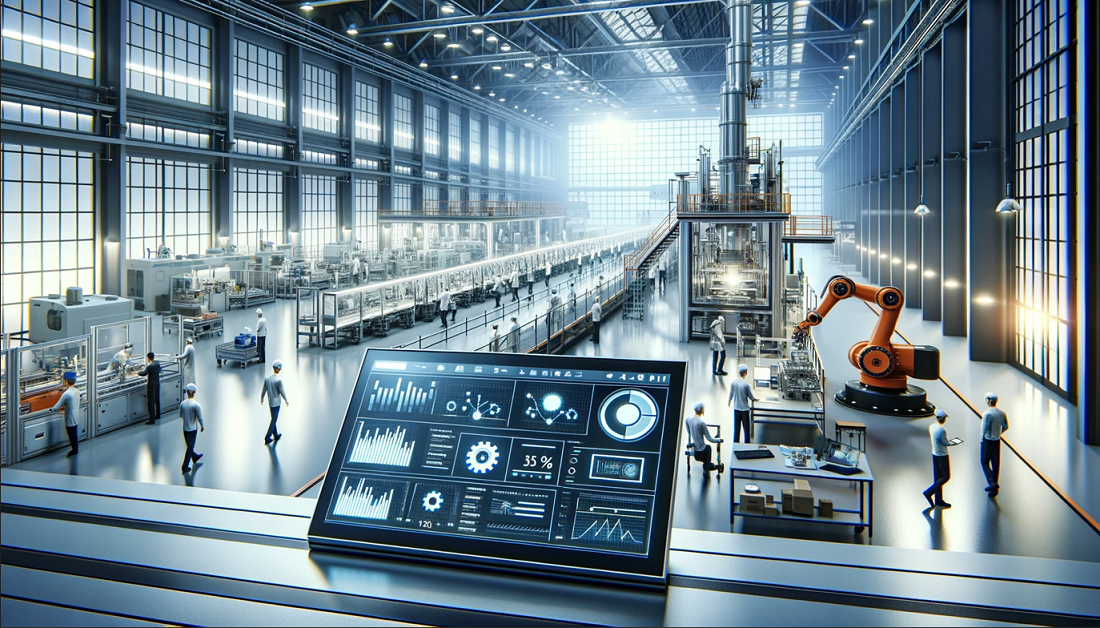Artificial intelligence (AI) is revolutionizing the restaurant industry by empowering businesses with data-driven insights through advanced demand forecasting. By leveraging vast datasets, including historical sales, weather patterns, local events, and social media trends, AI delivers highly accurate predictions of customer demand. This technology enables restaurants to optimize operations, reduce costs, and enhance customer experiences, making it a game-changer in a competitive industry.
Key Benefits of AI-Powered Demand Forecasting
Optimized Inventory Management
AI-driven demand forecasting allows restaurants to predict ingredient requirements with precision, significantly reducing food waste and preventing overstocking. For example, global chains like McDonald’s have implemented AI systems to analyze peak hours and customer patterns, enabling them to adjust inventory levels dynamically. This ensures fresh ingredients are available when needed while minimizing spoilage and storage costs. Smaller restaurants can also benefit by using AI tools to streamline supply chains and avoid costly over-ordering.
Personalized Marketing Strategies
AI’s ability to analyze customer preferences and behavior allows restaurants to craft targeted marketing campaigns. By identifying frequently ordered items or popular menu combinations, AI can generate personalized promotions, such as tailored discounts or loyalty rewards, to drive sales. This not only increases revenue but also strengthens customer loyalty by creating a more engaging and relevant dining experience. For instance, AI can recommend special offers based on a customer’s order history, encouraging repeat visits and higher satisfaction.
Enhanced Operational Agility
Accurate demand forecasting enables restaurants to anticipate busy periods and prepare accordingly. AI helps optimize staff scheduling by predicting peak hours, ensuring the right number of employees are on hand to handle customer influxes without overstaffing. In the kitchen, AI streamlines operations by forecasting order volumes, allowing chefs to prioritize prep work and reduce service times. This operational agility leads to faster service, happier customers, and a more efficient workflow, even during high-traffic periods like holidays or weekends.
Cost Reduction and Sustainability
Beyond operational efficiency, AI contributes to cost savings and sustainability. By minimizing food waste through precise inventory predictions, restaurants can reduce their environmental footprint. Additionally, optimized staffing and streamlined operations lower labor and overhead costs. These savings can be reinvested into improving menu offerings or enhancing the dining experience, giving restaurants a competitive edge in a crowded market.
Challenges and Considerations
While AI offers significant advantages, its adoption requires investment in technology and training. Smaller restaurants may face challenges in implementing AI due to budget constraints or lack of technical expertise. However, cloud-based AI solutions are becoming more accessible, allowing businesses of all sizes to harness these tools. Ensuring data privacy and integrating AI with existing systems are also critical considerations to maximize its benefits.
The Future of AI in Restaurants
As AI technology continues to evolve, its applications in demand forecasting will become even more sophisticated. Emerging trends, such as real-time sentiment analysis from social media or integration with IoT devices in smart kitchens, promise to further enhance predictive accuracy. Restaurants that embrace AI will not only improve efficiency but also position themselves as leaders in innovation, delivering exceptional value to customers in an increasingly digital world.
Conclusion
AI-powered demand forecasting is reshaping the restaurant industry by enabling smarter inventory management, personalized marketing, and operational agility. By reducing costs, minimizing waste, and enhancing customer satisfaction, AI helps restaurants thrive in a competitive landscape. As the technology becomes more accessible, its adoption will drive further innovation, making AI an indispensable tool for the future of dining.




